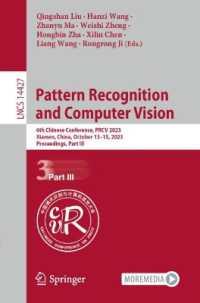- ホーム
- > 洋書
- > ドイツ書
- > Humanities, Arts & Music
- > History
- > antiquity
Full Description
The study of childhood in historical archaeology enriches interpretations of the past, but also has the potential for contributing to the understanding of methodological and theoretical issues in archaeology.








